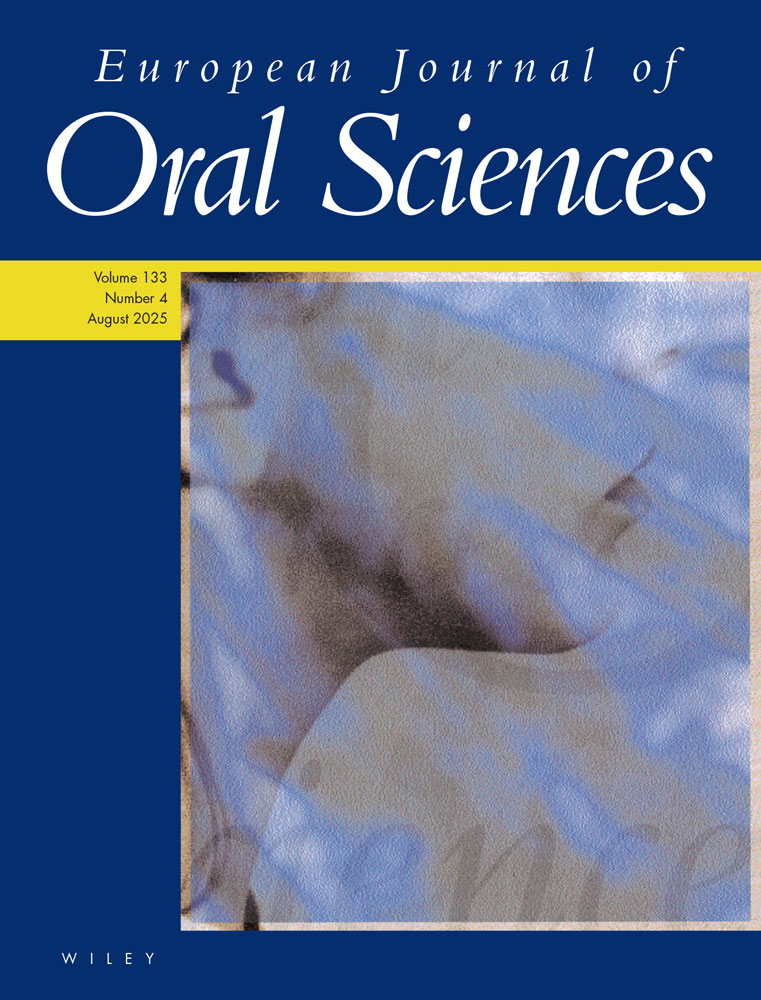The novel human beta-defensin-3 is widely expressed in oral tissues
Abstract
The purpose of this study was to investigate the expression of human beta-defensins (hBD), especially of the recently discovered hBD-3, in oral tissues by reverse-transcription polymerase chain reaction (RT-PCR). Primary oral keratinocytes (n = 3) and fibroblasts (n = 3), 64 non-inflamed and 40 inflamed oral tissue samples, and 10 samples of salivary glands, were examined. The transcripts for hBD-3 (61/64), as well as for hBD-1 (64/64) and hBD-2 (54/64), were found to be widely expressed in non-inflamed oral tissues. In contrast, only 23, 22 and 24 of the 40 inflamed tissues showed detectable hBD-1, -2 and -3 transcripts, respectively. In salivary glands, mRNA expression was constitutive for hBD-1, frequent for hBD-2 (9/10), and infrequent for hBD-3 (4/10). Oral keratinocytes, but not fibroblasts, contained transcripts for all beta-defensins, suggesting that the novel hBD-3 is also produced in the epithelial compartment of oral tissues. The results indicate an important role for the novel hBD-3, as well as for hBD-1 and hBD-2, in the innate oral epithelial host defense.




